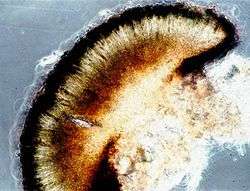Xylotomy


Xylotomy is the preparation of small slivers of wood for examination under a microscope, often using a microtome.
It is useful for providing forensic evidence in some criminal cases where finding a fragment of wood on an individual and matching it to a weapon used in a crime would be helpful.[1][2] During the trial of Bruno Richard Hauptmann, accused in the Lindbergh kidnapping during the 1930's, the xylotomist Arthur Koehler was able to provide crucial evidence by linking a piece of pine from a ladder used in a kidnapping to one particular factory whose machinery was defective, and from there to one particular lumberyard.[3] Koehler searched for eighteen months for the yard, and presented his evidence dramatically in court by presenting the court with a chalk rubbing of the samples, which he made there and then, demonstrating that they were identical.[4] He also matched other pieces of the ladder to a chisel used to create the joists, missing from the defendant's tool chest, and to a missing plank from the suspect's attic floor.
It may also be useful in forestry studies. Identifying the species of a piece of wood is not always easy, in which case a xylotheque may provide samples with which the xylotomist can compare his own. Xylotomy may be carried out by a forensic biologist. People who specialize in xylotomy are rare. The public have been known to confuse it with someone who plays the xylophone[5] and they do not tend to take much interest in the subject.[6]
References
- ↑ World of Forensic Science article
- ↑ "Archived copy". Archived from the original on February 8, 2009. Retrieved August 18, 2008. Illinois Digital Newspaper Collection
- ↑ Nightmare remembered
- ↑ New Jersey v. Hauptmann (Cont'd)
- ↑ THE XYLOTOMIST, Post-Standard, The Thursday, September 22, 1910
- ↑ Washington Post, The Wednesday, August 24, 1910